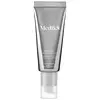What's inside
What's inside
 Key Ingredients
Key Ingredients

 Benefits
Benefits

 Concerns
Concerns

 Ingredients Side-by-side
Ingredients Side-by-side

Water
Skin ConditioningCaprylic/Capric Triglyceride
MaskingGlycerin
HumectantIsododecane
EmollientCyclodextrin
AbsorbentCetearyl Olivate
Sodium Acrylate/Sodium Acryloyldimethyl Taurate Copolymer
Emulsion StabilisingCetearyl Alcohol
EmollientSorbitan Olivate
EmulsifyingTocopheryl Acetate
AntioxidantSqualane
EmollientHydroxyethyl Acrylate/Sodium Acryloyldimethyl Taurate Copolymer
Emulsion StabilisingHydroxyacetophenone
AntioxidantRubus Chamaemorus Seed Oil
Skin Conditioning3-O-Ethyl Ascorbic Acid
Skin ConditioningPhenoxyethanol
PreservativeHydroxypropyl Methylcellulose
Emulsion StabilisingPentylene Glycol
Skin ConditioningDaucus Carota Sativa Seed Oil
EmollientRetinal
Skin ConditioningSodium Hyaluronate
HumectantTetrahexyldecyl Ascorbate
AntioxidantAlumina
AbrasiveIsostearic Acid
CleansingLecithin
EmollientPolyglyceryl-3 Polyricinoleate
EmulsifyingLonicera Japonica Flower Extract
Skin ConditioningLonicera Caprifolium Flower Extract
PerfumingPolyhydroxystearic Acid
EmulsifyingDisodium EDTA
Stearic Acid
CleansingEthylhexylglycerin
Skin ConditioningPolysorbate 60
EmulsifyingSorbitan Isostearate
EmulsifyingBHT
AntioxidantVanilla Planifolia Fruit Extract
Skin ConditioningSodium Polyaspartate
HumectantDipteryx Odorata Bean Extract
MaskingCoumarin
PerfumingCI 14700
Cosmetic ColorantCI 77891
Cosmetic ColorantWater, Caprylic/Capric Triglyceride, Glycerin, Isododecane, Cyclodextrin, Cetearyl Olivate, Sodium Acrylate/Sodium Acryloyldimethyl Taurate Copolymer, Cetearyl Alcohol, Sorbitan Olivate, Tocopheryl Acetate, Squalane, Hydroxyethyl Acrylate/Sodium Acryloyldimethyl Taurate Copolymer, Hydroxyacetophenone, Rubus Chamaemorus Seed Oil, 3-O-Ethyl Ascorbic Acid, Phenoxyethanol, Hydroxypropyl Methylcellulose, Pentylene Glycol, Daucus Carota Sativa Seed Oil, Retinal, Sodium Hyaluronate, Tetrahexyldecyl Ascorbate, Alumina, Isostearic Acid, Lecithin, Polyglyceryl-3 Polyricinoleate, Lonicera Japonica Flower Extract, Lonicera Caprifolium Flower Extract, Polyhydroxystearic Acid, Disodium EDTA, Stearic Acid, Ethylhexylglycerin, Polysorbate 60, Sorbitan Isostearate, BHT, Vanilla Planifolia Fruit Extract, Sodium Polyaspartate, Dipteryx Odorata Bean Extract, Coumarin, CI 14700, CI 77891
Water
Skin ConditioningButylene Glycol
HumectantNiacinamide
SmoothingAzelaic Acid
BufferingDicaprylyl Carbonate
EmollientGlycerin
HumectantEthoxydiglycol
HumectantCetearyl Alcohol
EmollientDimethyl Isosorbide
SolventBakuchiol
AntimicrobialTapioca Starch
Benzyl Alcohol
PerfumingAllantoin
Skin ConditioningSodium Stearoyl Glutamate
CleansingXanthan Gum
EmulsifyingPhenoxyethanol
PreservativeHydroxypinacolone Retinoate
Skin ConditioningDisodium EDTA
Dehydroacetic Acid
PreservativePolymethylsilsesquioxane
Water, Butylene Glycol, Niacinamide, Azelaic Acid, Dicaprylyl Carbonate, Glycerin, Ethoxydiglycol, Cetearyl Alcohol, Dimethyl Isosorbide, Bakuchiol, Tapioca Starch, Benzyl Alcohol, Allantoin, Sodium Stearoyl Glutamate, Xanthan Gum, Phenoxyethanol, Hydroxypinacolone Retinoate, Disodium EDTA, Dehydroacetic Acid, Polymethylsilsesquioxane
 Reviews
Reviews

Ingredients Explained
These ingredients are found in both products.
Ingredients higher up in an ingredient list are typically present in a larger amount.
Cetearyl alcohol is a mixture of two fatty alcohols: cetyl alcohol and stearyl alcohol. It is mainly used as an emulsifier. Emulsifiers help prevent the separation of oils and products. Due to its composition, it can also be used to thicken a product or help create foam.
Cetearyl alcohol is an emollient. Emollients help soothe and hydrate the skin by trapping moisture.
Studies show Cetearyl alcohol is non-toxic and non-irritating. The FDA allows products labeled "alcohol-free" to have fatty alcohols.
This ingredient is usually derived from plant oils such as palm, vegetable, or coconut oils. There is debate on whether this ingredient will cause acne.
Due to the fatty acid base, this ingredient may not be Malassezia folliculitis safe.
Learn more about Cetearyl AlcoholDisodium EDTA plays a role in making products more stable by aiding other preservatives.
It is a chelating agent, meaning it neutralizes metal ions that may be found in a product.
Disodium EDTA is a salt of edetic acid and is found to be safe in cosmetic ingredients.
Learn more about Disodium EDTAGlycerin is already naturally found in your skin. It helps moisturize and protect your skin.
A study from 2016 found glycerin to be more effective as a humectant than AHAs and hyaluronic acid.
As a humectant, it helps the skin stay hydrated by pulling moisture to your skin. The low molecular weight of glycerin allows it to pull moisture into the deeper layers of your skin.
Hydrated skin improves your skin barrier; Your skin barrier helps protect against irritants and bacteria.
Glycerin has also been found to have antimicrobial and antiviral properties. Due to these properties, glycerin is often used in wound and burn treatments.
In cosmetics, glycerin is usually derived from plants such as soybean or palm. However, it can also be sourced from animals, such as tallow or animal fat.
This ingredient is organic, colorless, odorless, and non-toxic.
Glycerin is the name for this ingredient in American English. British English uses Glycerol/Glycerine.
Learn more about GlycerinPhenoxyethanol is a preservative that has germicide, antimicrobial, and aromatic properties. Studies show that phenoxyethanol can prevent microbial growth. By itself, it has a scent that is similar to that of a rose.
It's often used in formulations along with Caprylyl Glycol to preserve the shelf life of products.
Water. It's the most common cosmetic ingredient of all. You'll usually see it at the top of ingredient lists, meaning that it makes up the largest part of the product.
So why is it so popular? Water most often acts as a solvent - this means that it helps dissolve other ingredients into the formulation.
You'll also recognize water as that liquid we all need to stay alive. If you see this, drink a glass of water. Stay hydrated!
Learn more about Water